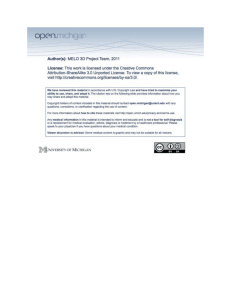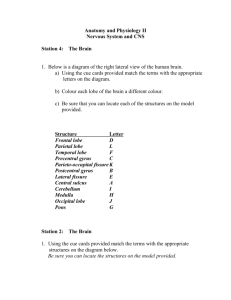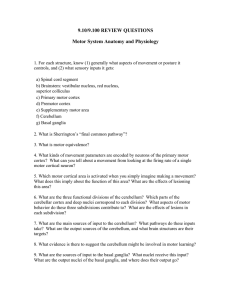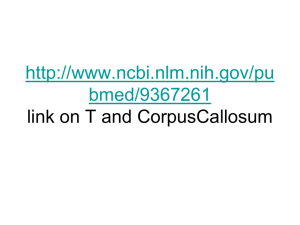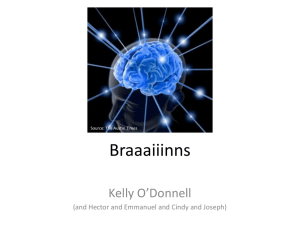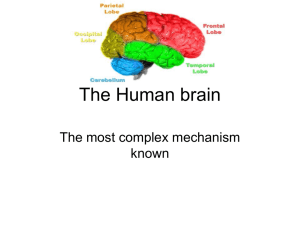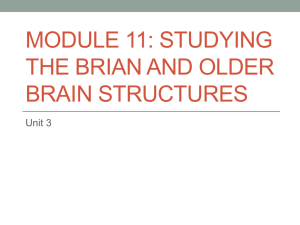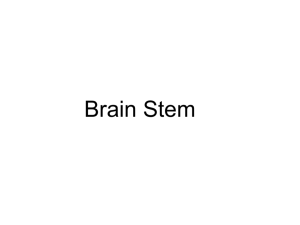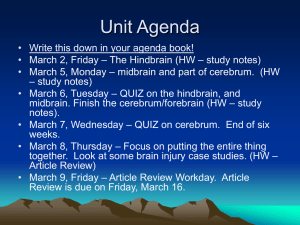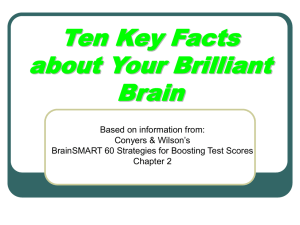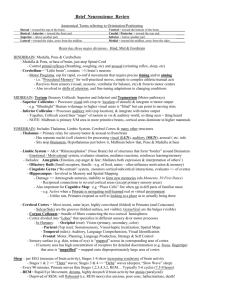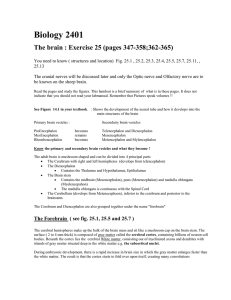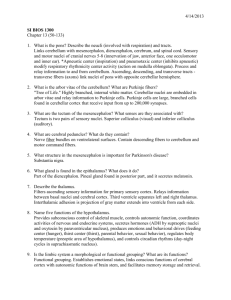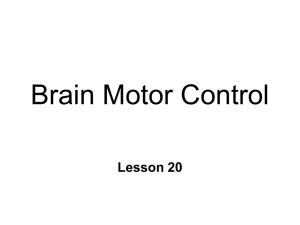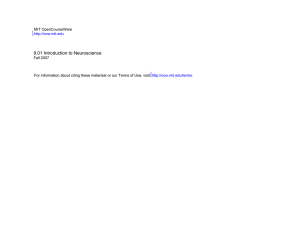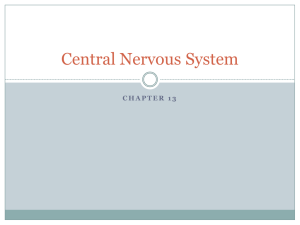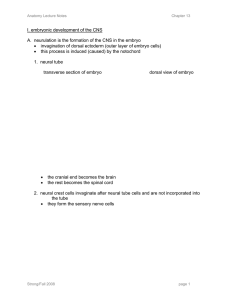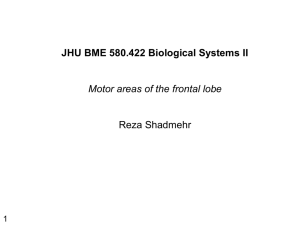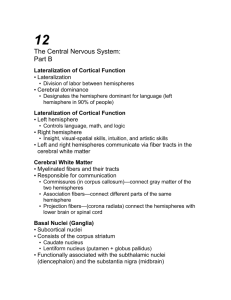The Brain Notes
advertisement
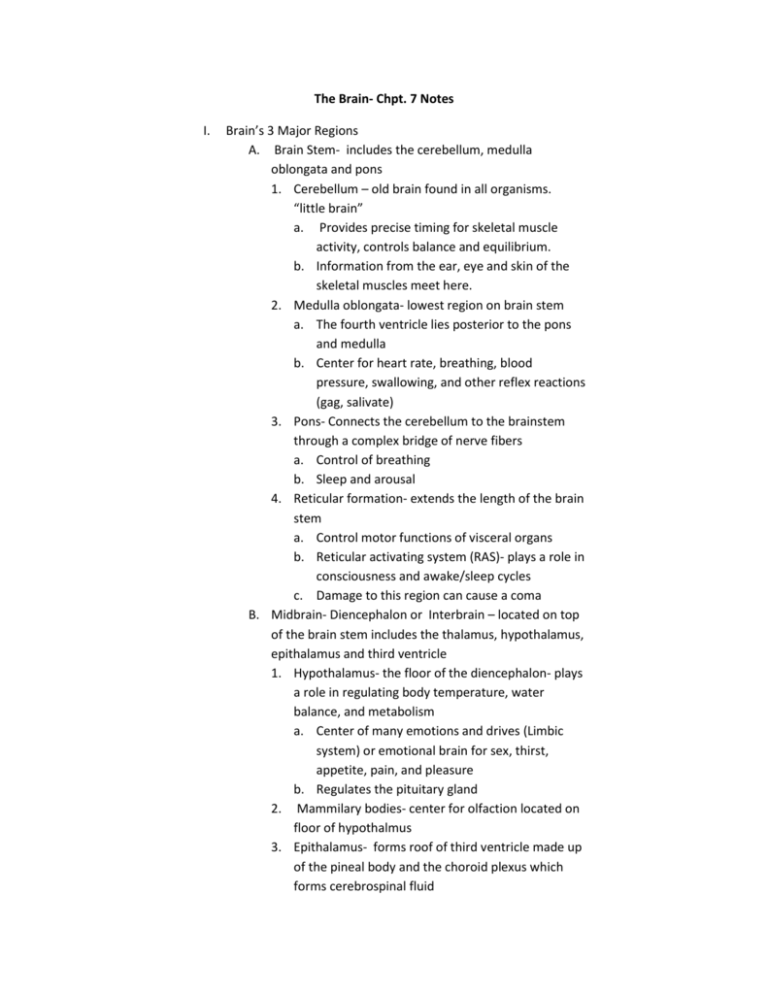
The Brain- Chpt. 7 Notes I. Brain’s 3 Major Regions A. Brain Stem- includes the cerebellum, medulla oblongata and pons 1. Cerebellum – old brain found in all organisms. “little brain” a. Provides precise timing for skeletal muscle activity, controls balance and equilibrium. b. Information from the ear, eye and skin of the skeletal muscles meet here. 2. Medulla oblongata- lowest region on brain stem a. The fourth ventricle lies posterior to the pons and medulla b. Center for heart rate, breathing, blood pressure, swallowing, and other reflex reactions (gag, salivate) 3. Pons- Connects the cerebellum to the brainstem through a complex bridge of nerve fibers a. Control of breathing b. Sleep and arousal 4. Reticular formation- extends the length of the brain stem a. Control motor functions of visceral organs b. Reticular activating system (RAS)- plays a role in consciousness and awake/sleep cycles c. Damage to this region can cause a coma B. Midbrain- Diencephalon or Interbrain – located on top of the brain stem includes the thalamus, hypothalamus, epithalamus and third ventricle 1. Hypothalamus- the floor of the diencephalon- plays a role in regulating body temperature, water balance, and metabolism a. Center of many emotions and drives (Limbic system) or emotional brain for sex, thirst, appetite, pain, and pleasure b. Regulates the pituitary gland 2. Mammilary bodies- center for olfaction located on floor of hypothalmus 3. Epithalamus- forms roof of third ventricle made up of the pineal body and the choroid plexus which forms cerebrospinal fluid C. Cerebrum- largest and most superior part of the brain. Composed of left and right hemisphere and divided by a longitudinal fissure. Connected by Corpus Callosum – bridge between two hemispheres Cerebral Cortex is the covering which conducts higher order thoughts 1. Gyri- raised ridges of cerebral cortex; sulci- shallow grooves that separate the ridges 2. Lobes- named for cranial bones; 4 major regions of the brain a. Occipital lobe- visual cortex b. Temporal lobe- auditory area c. Frontal lobe- primary motor cortex which controls skeletal muscle movement Motor homunculus- a body map showing relative number of fine motor control d. Parietal lobe- posterior to the central sulcus it contains the sensory or somatosensory area which allows us to recognize pain, coldness or touch. Sensory homunculus- a body map with relative numbers of sensory receptors 3. Broca’s Area- center in frontal lobe for speech and vocalization 4. Speech Area- located at the junction of the temporal, parietal and occipital lobes 5. Basal nuclei or basal ganglia – islands of gray matter in the white matter - regulate voluntary muscle activity
